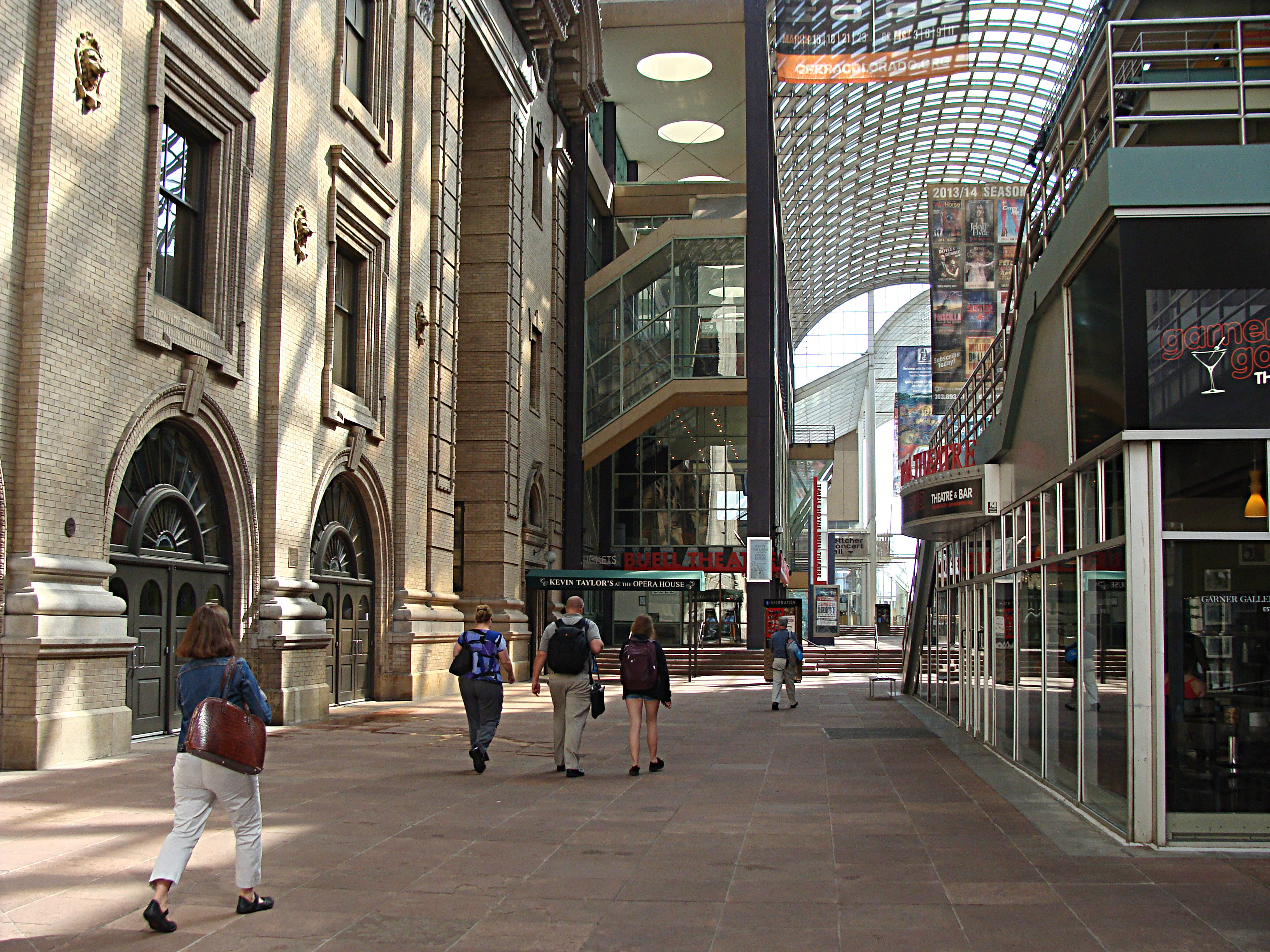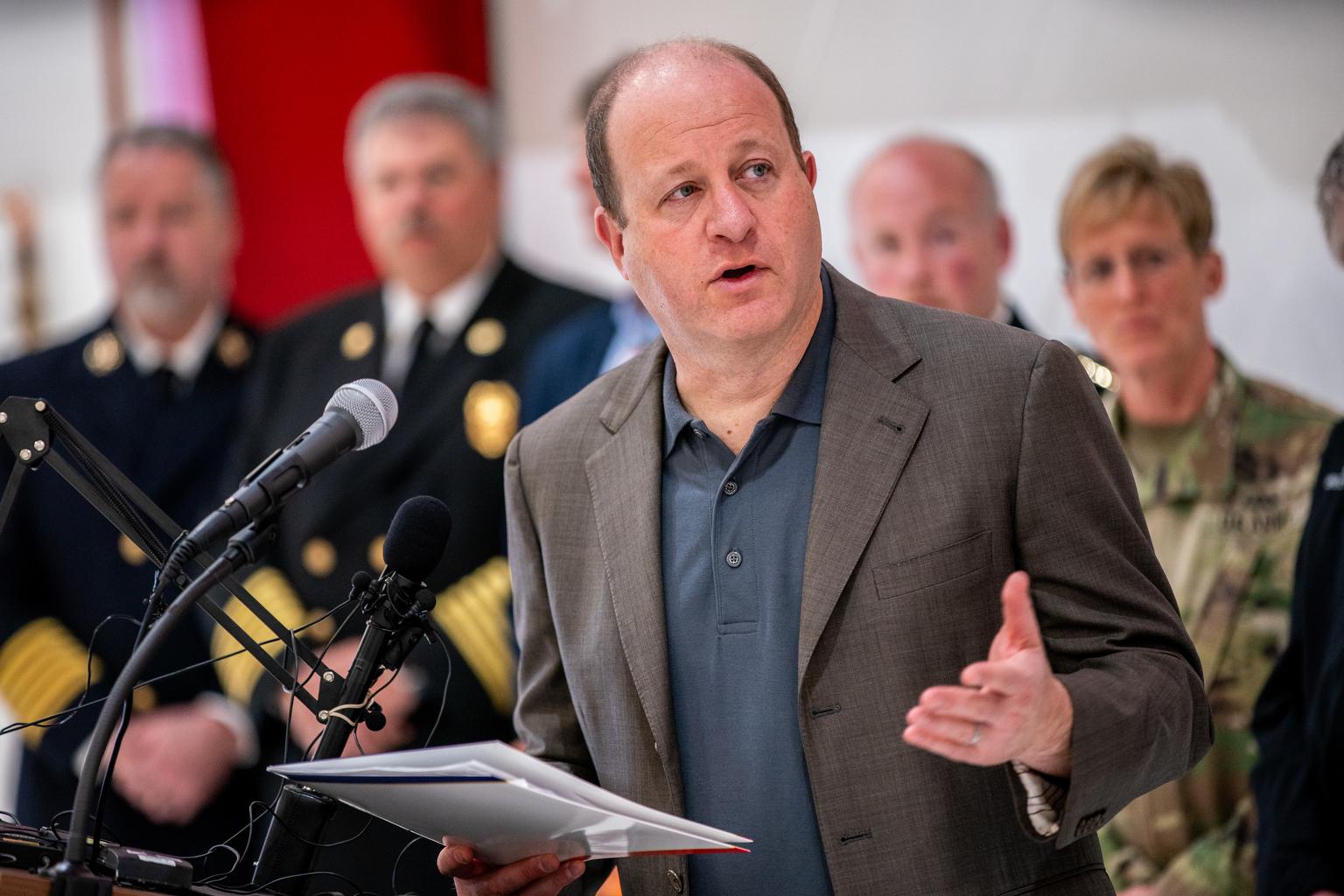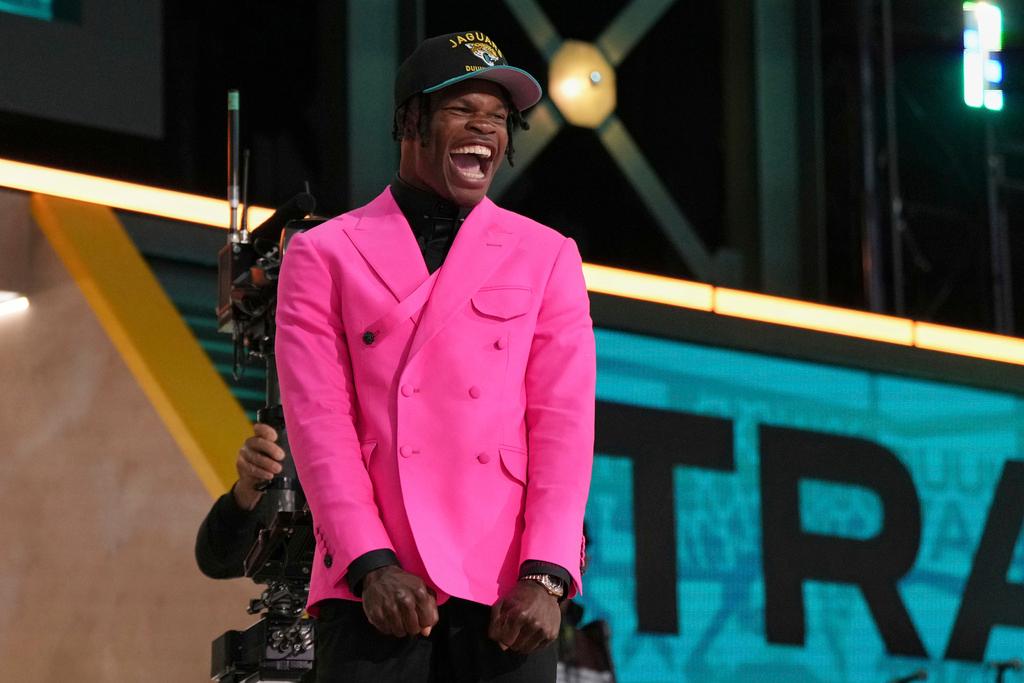
How do you keep a civic gem from becoming an urban relic? That's the question facing the Denver Performing Arts Complex and Denver Arts and Venues, the agency which owns it.
DPAC, as the complex is known, is the second largest of its kind in the U.S., after Lincoln Center. Massive performance halls house the city's flagship classical arts companies: the Colorado Ballet, the Colorado Symphony, and Opera Colorado. Patrons can see a variety of performances there, from Broadway shows to cutting-edge theater.
But walk through the glass-roofed galleria when a show isn’t playing and there's one thing you won't see: people. Although the complex is located between busy 14th Street and Speer Boulevard, the space feels remote despite the urban bustle all around.
According to University of Colorado at Denver planning professor Jeremy Nemeth, the center's design, with a big onsite parking garage and only narrow pedestrian entrances, was intended to lure suburbanites back to the downtown area. When DPAC was built in the 1970s, urban residents were migrating from the downtown area to the suburbs.
Nemeth says the message to suburbanites was: "Don’t worry, we’re going to create a very safe experience for you. You can still get your arts and culture, but you don’t need to come into contact with the ‘dirty city.’"
But with the “dirty city” era long gone and downtown now booming, Nemeth says DPAC isn't keeping pace. There are few signs to welcome passersby into the complex - and fewer benches for them to rest on if they did enter. The galleria, he says, violates the rules of “Urban Design 101.”
The city is trying to lure in more foot traffic by hosting more outdoor events. But the transformation city officials are hoping for is still in the early stages.
The internal spaces at DPAC aren't seeing much use either. The venue's three biggest halls are empty around half the time and two of its flagship classical tenants, the symphony and the opera, have struggled financially in recent years.
Inside and out, city officials are coming to see the complex as an underutilized asset.
"I think performing arts complexes are facing the same challenges that the organizations that perform in them are facing," says Ginger White, Deputy Director of Denver Arts and Venues. "Aging audiences. Younger audiences who want to experience arts and culture in a different way.”
White also says that public and private funding is becoming a challenge.
Denver recently commissioned a Master Vision Plan for the complex designed to find ways to streamline management, increase promotion and bring in new audiences.
The plan recommends was that the tenant companies band together to combine some office operations, a model that succeeded in bringing costs down for performing arts centers in Columbus and Pittsburgh. The plan also raises the thorny question of what to do with Boettcher Concert Hall.
The hall was built specifically for unamplified musical performances. But with 2,600 seats, it's far too large for the CSO to fill during its regular shows.
The City of Denver is scheduled to start a $17-million renovation at Boettcher next year. The process, however, is on hold as officials try to decide whether to focus their efforts on structural improvements or make more fundamental changes to the space.
Adding to the uncertainty over the hall's future, its main tenant, the CSO, says it may seek a new home, complaining the symphony can no longer afford the $323,000 annual rent the city charges, in addition to a 10 percent seat tax on every ticket.
Denver Arts and Venues director Kent Rice says it may be time for a big change at Boettcher.
"Is there some way to make a performance venue the right size... given the money we have to renovate?" Rice asks.
If the city does find the will - and a way - to transform Boettcher, there’s at least one group interested in moving in: Wonderbound, a dance company that currently performs at suburban venues.
Wonderbound Producing Director Dawn Fay says there’s no place downtown that meets the company’s very specific needs: a giant stage and only around 500 seats. If DPAC could supply that, Fay says Wonderbound would be very interested.
"As an urban dance company, our home needs to be in an urban setting, which is downtown Denver," Fay says. "Our next step is to find a performance home that will enable the audience that we have in Denver to come to our shows on a very regular basis."
While plans for Boettcher remain up in the air, the city is working to bring new programming to its existing venues.
In June, the experimental dance company Control Group will present a new piece in the Studio Loft at the Ellie Caulkins Opera House, a space that's only been used for performances a handful of times.
The production is part of new collaboration between Arts and Venues and the Denver Theater District designed to bring new performers to the complex. The city is discounting some of the usual costs of using its facilities and DTD is helping groups navigate the complexities of working in a city-owned venue.
Control Group Artistic Director Patrick Mueller says that without that help, it’s unlikely his company would be able to perform at the complex.
Mueller says the collaboration benefits both sides. Performing at DPAC gives his cutting-edge group credibility beyond its established audience while Control Group's existing fans are exactly the sort of younger, edgier arts patrons the complex wants to attract.
"We will be drawing strangers to us, and strangers to DPAC... which is really exciting," Mueller says.
It's the kind of excitement DPAC is hoping to generate more of in the future.









